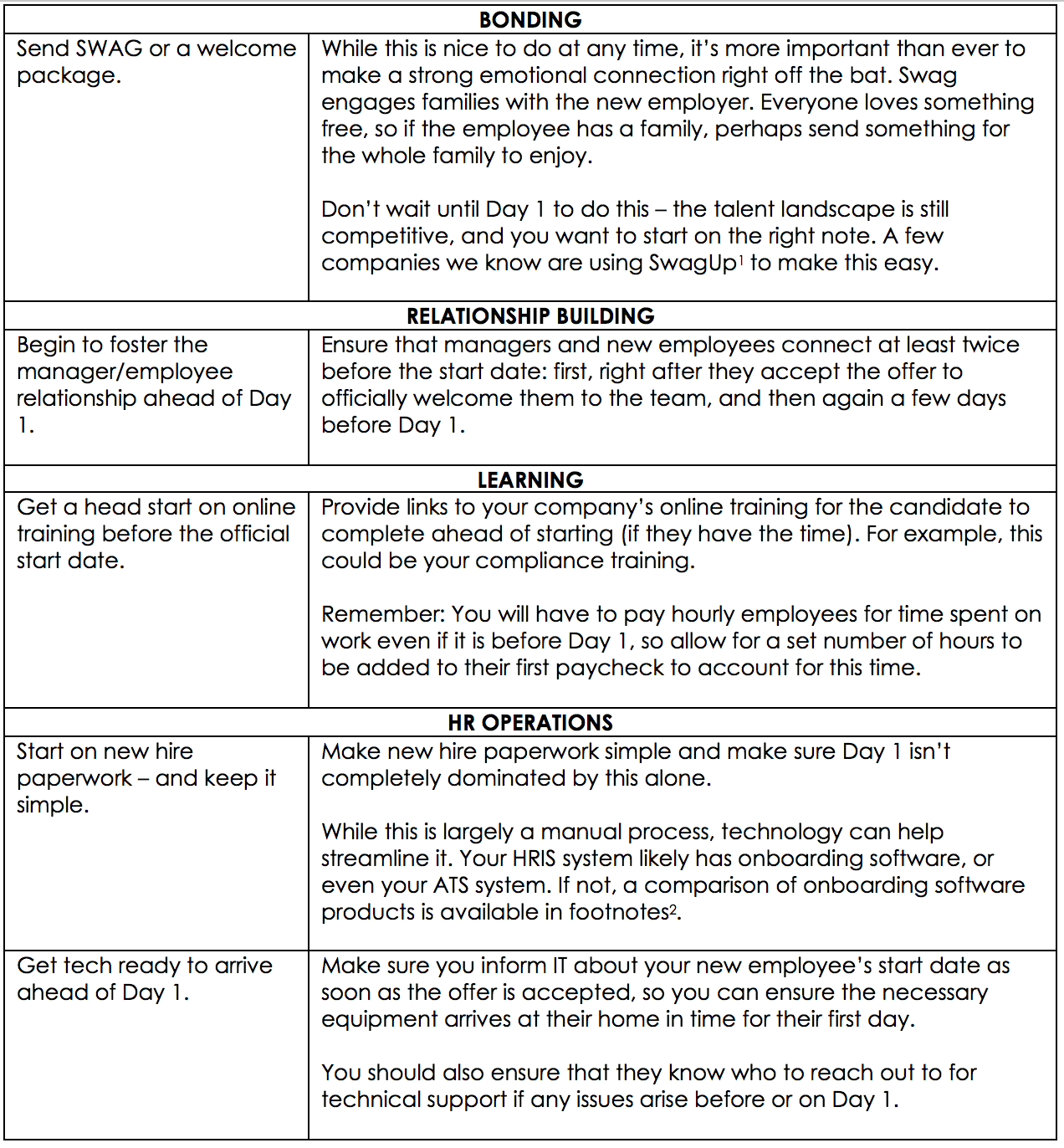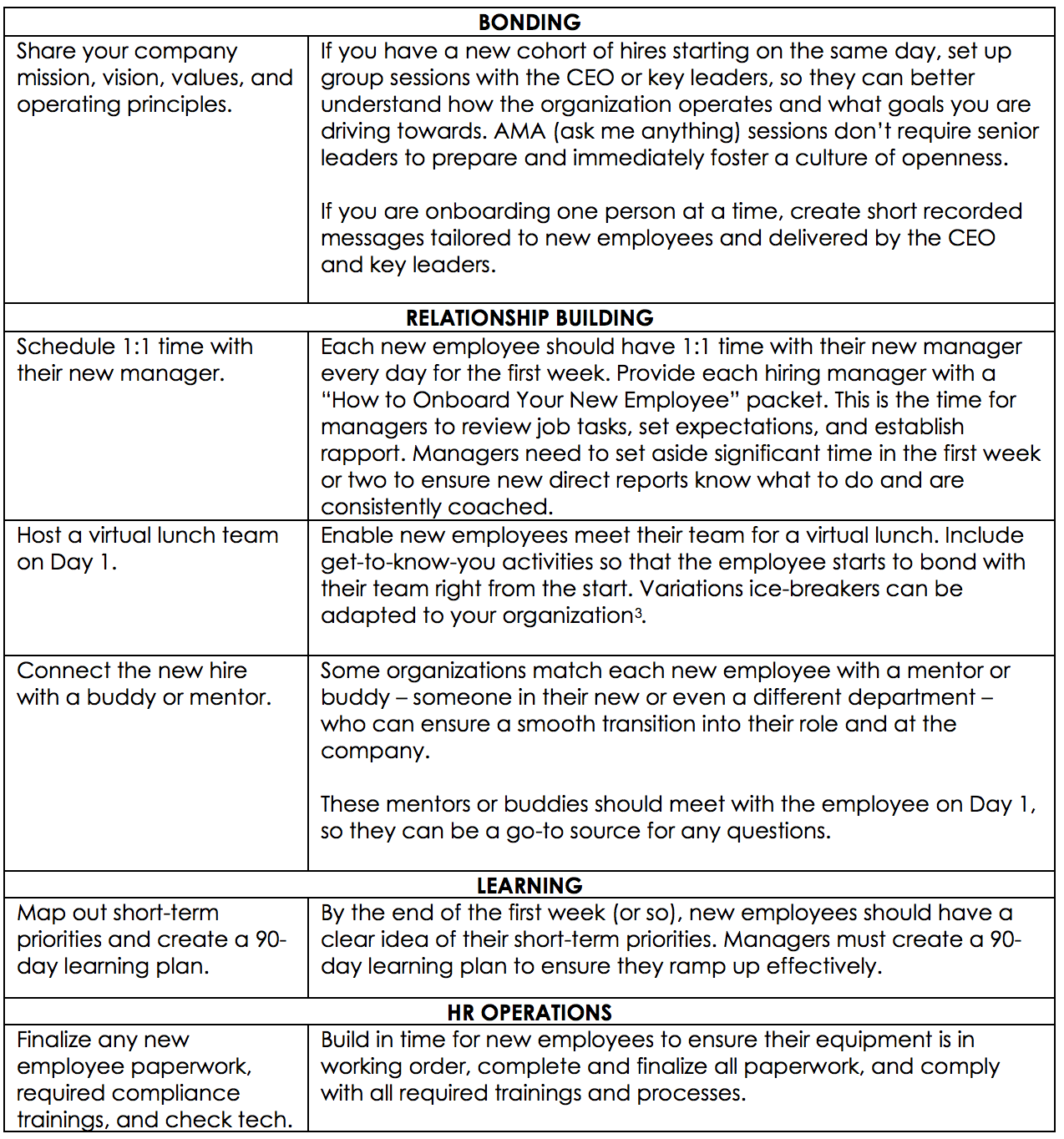The Future of Work: A Guide to Onboarding New Employees Remotely

Long before we heard the term “shelter in place,” companies had started to embrace a mobile workforce by hiring fully remote employees. In March 2020, however, almost every company (except essential workers) had to adapt to an entirely remote environment.
While this transition impacts all people across organizations, new employees find it the most difficult to navigate. Many have been introduced to their jobs, company culture, and the people in a remote setting.
For ScaleUp companies, you have only one chance to get onboarding right, and it can impact whether new employees stick around and grow with you or decide to leave. It’s vital that you intentionally design and deliver a great new-employee onboarding experience.
There are four guiding principles of a successful remote onboarding program:
- Bonding: Start to build excitement about your company and brand as soon as a person accepts the offer.
- Relationship Building: Connect new employees with co-workers in meaningful ways.
- Learning: Make sure you have a plan for new employees to build the knowledge, skills, and capabilities to be successful in their new role.
- HR Operations: Ensure paperwork and compliance are quick and painless.
The onboarding period starts once an offer is accepted until the employee’s first 90 days are complete.
Pre-Boarding: The Critical Period Between Offer Acceptance and Day 1
The key objective ahead of new employees’ official start date is to make them feel welcomed and connected to your organization, as well as ensure they hit the ground running.
Some recommendations:

The First Week – Setting the Tone
The entire first week should be dedicated to getting the employee familiar with the company, the culture, the people, and the job expectations. It is not solely HR’s responsibility to handle onboarding – department teammates, leaders, and other peers should also be involved. Everyone is responsible for making a new employee productive and successful.
The cost to the organization of slow ramp times or a premature employee separation is significant. It’s estimated that losing an employee can cost 1.5-2 times the employee’s salary. Depending on the individual’s level of seniority, the financial burden fluctuates. For technical positions, the cost jumps to 100-150 percent of salary. At the high end, C-suite turnover can cost 213 percent of salary. These numbers emphasize the importance of making employees successful in order to limit the cost to growth of premature separation.
Some recommendations for the first week:

Week Two Through the First 90 Days
From week two through the first 90 days, it is essential that new employees understand their role, learn how to navigate the company, gain confidence in their ability to perform their job, as well as feel supported by the company and their teams.
In the first few weeks, you should create a 90-day plan to act as a guide for the employee and help ensure their success within the first several months of employment. Be sure to talk about measures of success: OKRs, KPIs, and SMART Goals, and how each of these relates to the new employee’s role. Managers should regularly check in with employees on their progress and help them prioritize and reprioritize as new tasks appear.
You also shouldn’t wait until a 90-day check-in to hear whether a new employee is dissatisfied or not and how they are performing in their role. HR, mentors/buddies, and direct managers should regularly touch base with the new employee on their general wellbeing, as well as how they are adjusting to the new role and company. Managers should also check with teammates to understand whether new employees are starting to contribute.
It is also important to note that office environments lead to spontaneous cross-team connections, conversations, and the sharing of institutional knowledge. Without an in-office experience, building and maintaining connections to people are more difficult, and even more essential, especially in an employee’s early days. Your company must create opportunities for new employees to regularly connect with people across teams and departments, since they aren’t able to walk around and meet people face to face. Some ideas include:
- Virtual lunch with the CEO or key leaders. A 1:1 lunch can be intimidating for entry-level employees, so many companies host group lunches versus individual lunch. Some companies allow employees to order in for lunch and put this “company” lunch on their corporate credit cards (or that of their manager’s).
- Virtual Happy Hour/Brown Bag Lunch/Activity
- Shout-out or introductions for new employees at your virtual All-Hands meetings; foster human connection in a remote setting with virtual watercooler tools like Donut.
Additional Resources for Remote Onboarding
The topic of virtual onboarding new remote employees is an active one in online discussions, and the landscape has been rapidly changing as new tools, apps, and solutions arise to serve a remote workforce. Below is a list of additional resources on ways to create an impactful onboarding experience for new employees:
- Glassdoor: 3 Strategies for Acing Remote Workforce Onboarding
- Fast Company: How to onboard new employees when you’re all working from home
- Greenhouse: Have remote employees? Here’s how to onboard them correctly
- TalentLMS: Onboarding remote employees: 3 ways to give a warm, virtual welcome
- Workable: Remote employees onboarding checklist
- Forbes: How to onboard a remote team member
Conclusion
Recruiting employees is a costly activity in terms of time and recruiting fees. Onboarding can be costly as well – especially if the new employees don’t contribute as anticipated and aren’t productively supporting your company’s growth plans.
The bottom line for onboarding remote new employees is that companies need to be mindful of the time it will take – at least 2x what it takes in person – and be intentional about building connections to team members and the organization. Nothing happens by osmosis. Onboarding needs to be planned and managed.
If you have any additional questions on remote onboarding, please contact HRonCall@insightpartners.com.
1 SwagUp









